
Search Engine Optimization-The Proven Method to Ranking on the First Page of Google For Any Long-tail Keyword
So you want to write an article that ranks on the first page of Google for a long-tail keyword?
Fine. So does everyone else.
Ranking on the first page of Google for well-selected long-tail keywords remains one of the fastest ways to get your content in front of thousands of people.
But how do you do this?
One option is to sign up with one of the shady SEO agencies that promises “first-page ranking in two weeks!”
I think we can all agree, you don’t want to do that. The days of fly-by-night-snake-oil-salesmen SEO agencies are long gone. If anyone promises first-position rankings, run the other way. There are no guarantees in the world of SEO.
Unfortunately, as a result of these con artists, some people think that first-page ranking is still a myth. I can’t say I blame them.
Maybe you’ve wondered too: is first-page ranking even possible today?
With the search algorithm changing so frequently and millions of pieces of new content being released on a daily basis, it could seem like a fool’s errand to try to create top-ranked content in Google.
But it’s not impossible.
To be completely transparent, you won’t rank for the term “Apple” or “Google” anytime soon. Those are head terms, not long-tail keywords. They are also trademarked, talked about, and dominated by large and established businesses.
But we’re not talking about head terms. We’re talking about long-tail keywords—the kind of terms you want to rank for in order to get more eyeballs, clicks, and sales.
After all, someone has to rank on the first page of Google. The sites that are ranking on the first page of Google right now had to do something in order to earn that rank.
What did they do to get it?
Today, I’ll show you the simple and proven method for ranking on the first page for any long-tail keyword.
This isn’t some shady trick, hack, tweak, black magic, or programming voodoo. In fact, this requires quite a bit of hard work, time, and effort. If you’re expecting “one sneaky trick that Google doesn’t want you to know about,” you’ve come to the wrong site.
This is the honest, no-BS method for truly outranking your competition, authentically gaining rank, and staking your claim in the most valuable digital real estate on the planet—the first page of Google.
1. Do your research
While many people believe that keyword research doesn’t matter anymore, it’s just as important now as it’s ever been.
In fact, the only way you can hope to rank highly for a keyword is to make sure you do your research.
And that’s where we need to start with this whole effort—researching the correct keyword.
What should you look for when researching the right keyword?
Length
The first thing you should always do whenever you are trying to rank for a long-tail keyword is to make sure the keyword is long enough.
I always suggest a minimum of four words.
Take a look at the type and length of searches that constitute a long-tail keyword.
Don’t go overboard and write content for a 10-word phrase, but anything fewer than four words, and you’ll likely face too much competition to get your article ranked.
Competition
Whenever you are trying to find a great keyword to rank for, you want to look for something that’s not highly competitive but still has a respectable number of monthly searches.
Long-tails don’t have a lot of search volume. But you shouldn’t worry about this. You’re not going for high volume—you are going for focused intention.
It’s better to have a few searches and rank high than to have tons of searches and not rank at all.
Run your selected long-tail keywords through Google’s Keyword Planner tool to find out how much competition you’re facing:
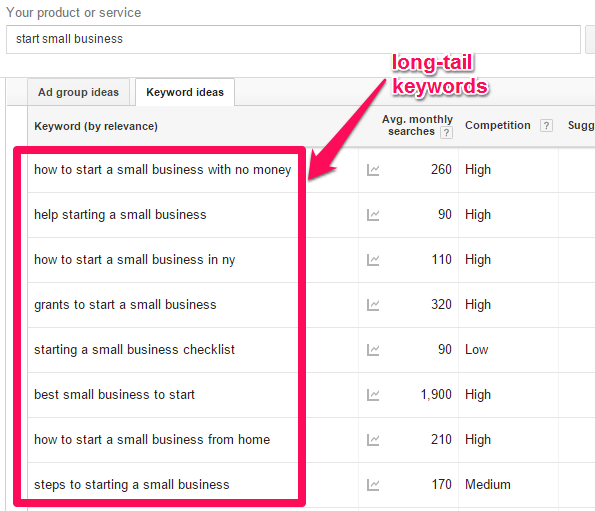
The good thing about long-tail keywords is that there are many of them. In fact, 70% of all search traffic today comes from the long-tail.
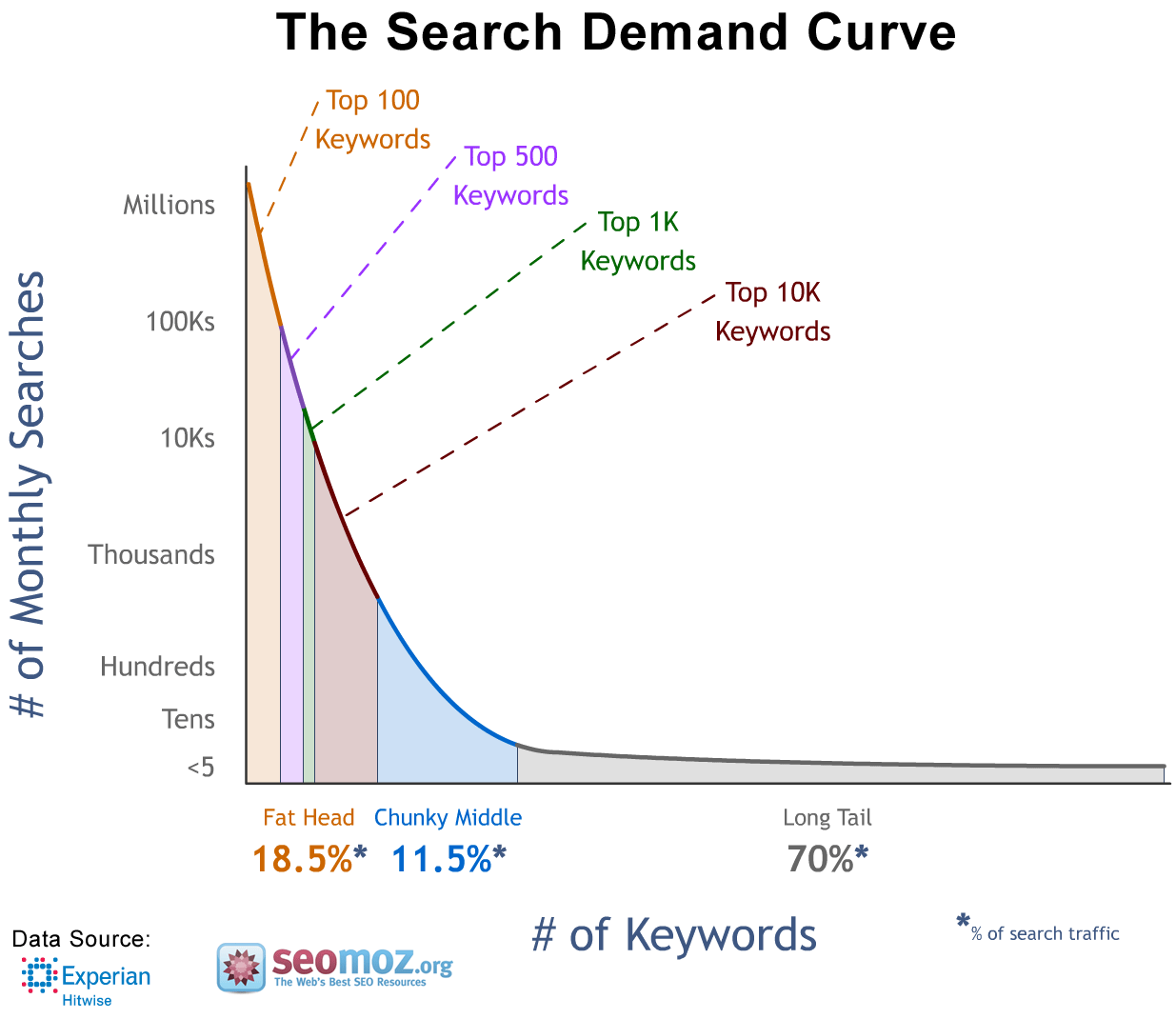
The key to this is to look for more descriptive keywords, ideally keywords that will convert well.
User Intent
Something that’s more important than the keyword itself is the intent behind the keyword.
For example, when someone searches the keyword you are trying to rank for, are they searching because they want to browse, shop, or buy?
The good thing about long-tail keywords is that it’s fairly obvious to figure out what the user is searching for.
Take a look at these queries:

The head terms—”camera” and “digital camera”—aren’t very descriptive. You might not be able to get a focused understanding of what the user is searching for.
But the long-tail keywords are valuable. Someone searching for “sony digital camera 7.1MP with 3x optical zoom” is looking for a specific product.
With a few additional variables, you can create and deliver precisely the kind of content the user is seeking:
- Buy sony digital camera 7.1MP with 3x optical zoom
- Compare sony digital camera 7.1MP with 3x optical zoom
- Research sony digital camera 7.1MP with 3x optical zoom
- sony digital camera 7.1MP with 3x optical zoom features
- sony digital camera 7.1MP with 3x optical zoom accessories
If you can figure out the long-tail intent—and it’s not that difficult—you can masterfully craft content that will match that intent. As a result, your content will quickly rise to the first page.
2. Write keyword-rich headlines
One of the keys to ranking in Google is to ensure you write keyword-rich headlines.
Headlines matter. They matter to people, and, therefore, they matter to SEO.
Most people will only pay attention to the first two words of their search phrases to decide whether or not you have the content they are looking for.
So make sure you play with variations of your headlines to include the necessary keywords and grab the reader’s attention as quickly as possible.
For example, let’s take the search phrase “make money online.”
Here are a few headline variations you could use to rank for that keyword:
- How to Make Money Online in 3 Simple Steps
- The Proven Method to Make Money Online in Any Niche
- The No B.S. Guide to Make Money Online This Weekend
- How to Make Money Online TODAY Using Skills You Already Have
- How to Make Money Online Without Any Marketable Skills
These headlines include the keyword, are clear in their purpose, and let readers know what they are in for right from the start.
When you use your selected long-tail keyword in the title of your article, you make the keyword stand out in the SERPs.
Remember, Google is smart. It can figure out what people are trying to search for even if that person isn’t doing a very good job of actually searching for it.
3. Pay attention to user intent
I mentioned this in the first section: align your content with user intent.
In other words, focus on the why behind a user’s search query.
For example, if someone types in “Buy 43” Panasonic TV,” you can safely assume the user intent is to make a purchase.
However, if the keyword is “43” Panasonic TV Reviews,” you can assume the user intent is to gain information.
You can think of these various types of intentions as concentric circles that correspond to the stages in a marketing funnel:
You can take this a step further on your quest for keyword domination by looking for key phrases that have top-ranking, highly-shared articles you could improve.
Here’s what I mean.
Let’s say you are trying to rank for the keyword phrase “content marketing strategies for your blog.”
You plug this keyword phrase into Buzzsumo and get these top three results:
“The Worst Content Marketing Strategy Mistakes You Don’t Know You Are Making”
“How to Do an Audit of Your Content Marketing Strategy for Your Blog”
and
“Advanced Content Marketing Strategies to Grow Your Blog 10X”
Here’s the thing.
Most people who are looking up the phrase “content marketing for your blog” are probably content marketing newbies, not looking for mistakes, audits, or advanced strategies.
This gives you a fantastic opportunity to write content that better addresses the user intent for that keyword and will, therefore, rank higher in Google.
For example, using the above long-tail keyword, you could write articles titled:
“The Best Content Marketing Strategies to Rapidly Grow Your New Blog”
“Simple Content Marketing Strategies for Your Blog to Double Your Traffic”
Or
“Proven Content Marketing Strategies to Double Your Blog Traffic in 90 Days.”
These titles are much more focused on the user intent behind this keyword search and will quickly rise to the front page of Google.
Why will they quickly rise to the front page of Google?
Because they meet the user’s intention.
Google’s algorithm is focused on providing the best possible search result for user queries. If you can successfully meet those intentions, you’ll be rewarded.
4. Write, write, write
I always tell people that if they want to rank in Google, they’d better get used to writing—and writing a lot.
Let’s face it. If you’re blogging once a month, you’re not generating enough content to get ranked.
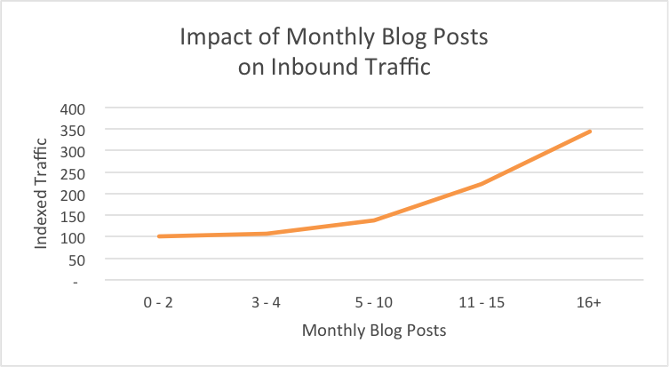
Articles that rank in Google are typically 2,000+ words and filled with pictures, embedded videos, and internal links.
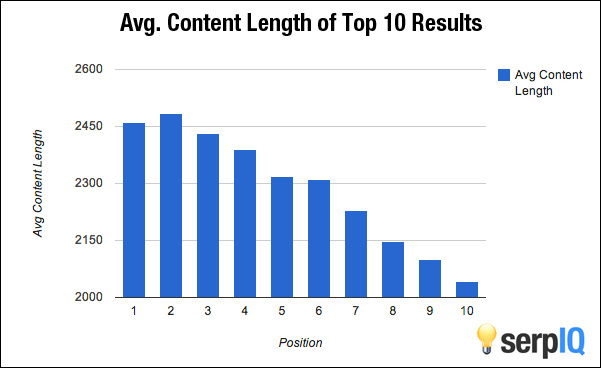
Whenever you write an article you want to rank, you should treat it as more of an “Ultimate Guide” than just a normal post.
Make the content so good that you could sell it as a standalone product if you wanted to.
Also, be wary of stuffing your article with keywords. Instead, focus on providing massive value to your audience, not pulling one over on Google…because you can’t pull one over on Google.
5. Market your new article like crazy
Now that you’ve written your article, it’s time to market the living crap out of it.
Ramit Sethi sums it up in his unscientific graph:
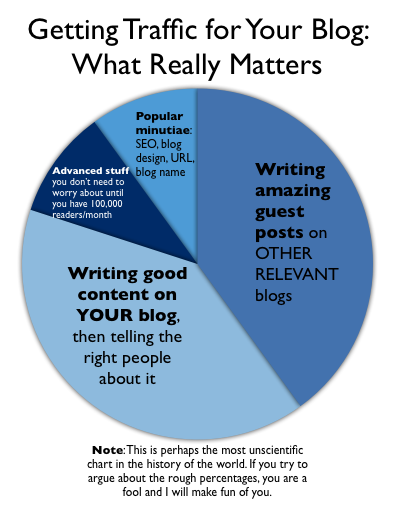
Putting it on Facebook, Twitter, and LinkedIn is a given, but there is a lot more to it than that.
What really matters is telling the right people about it.
Reach out to influencers to see if they’d be willing to link to your content; create a YouTube audio version of your content with a link back to the article in the description; or even create a podcast with a summary of your article.
Use every possible avenue to get your article in front of as many eyes as possible.
The more times your article is seen, shared, and commented on, the better your odds of higher ranking on Google.

Comments (0)